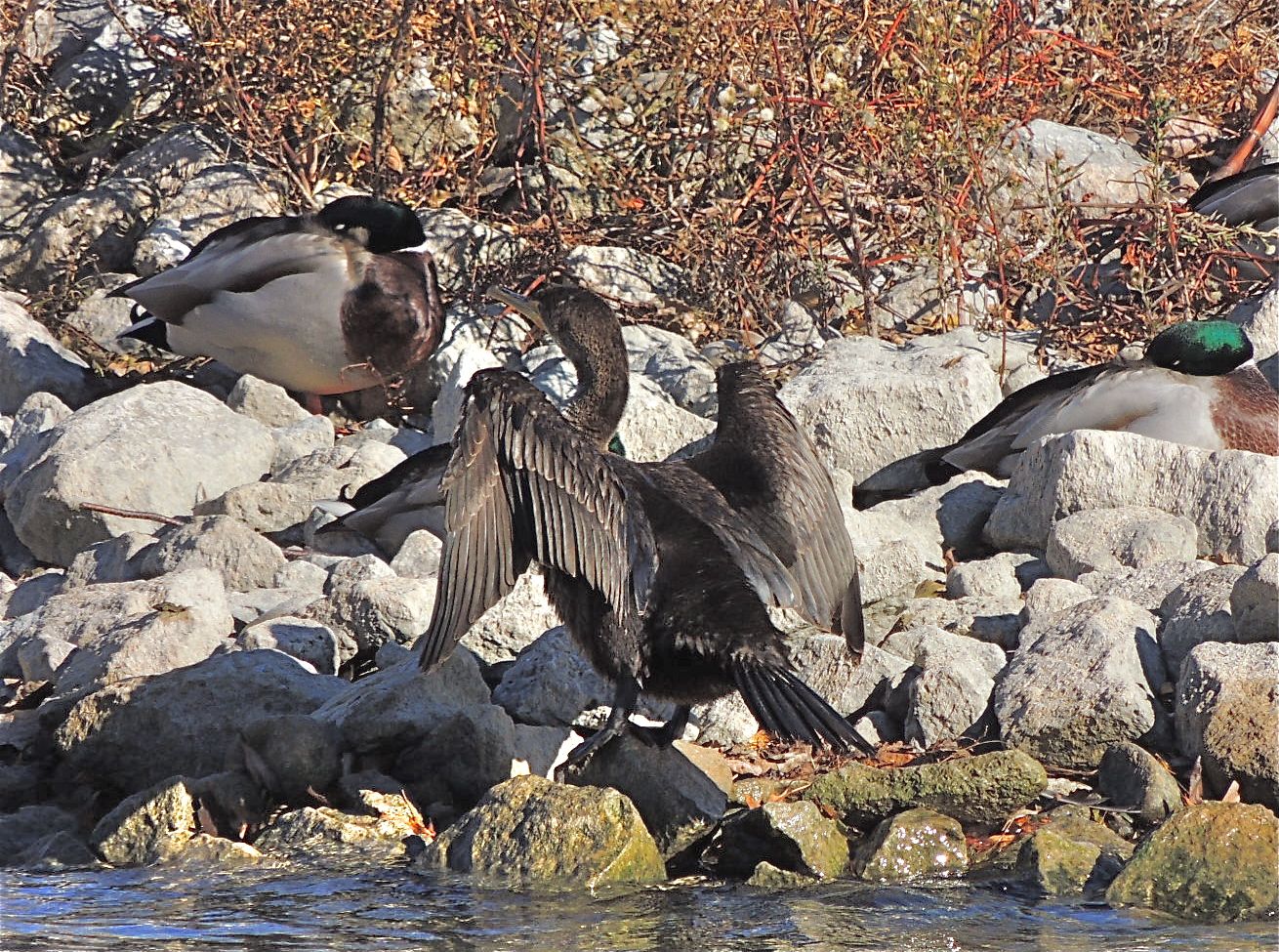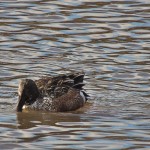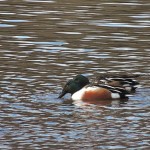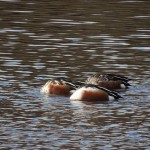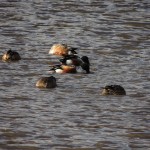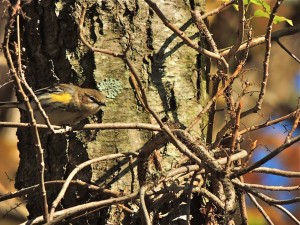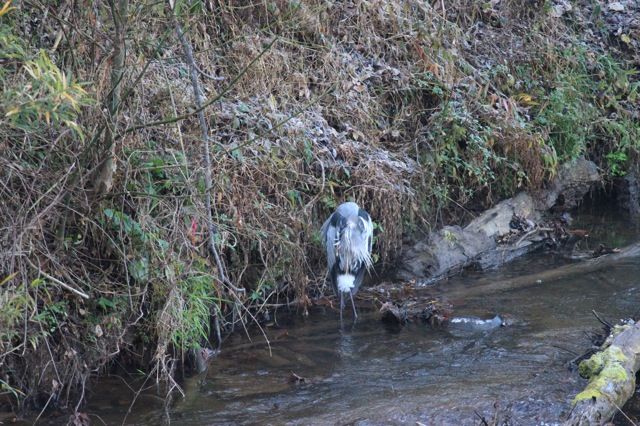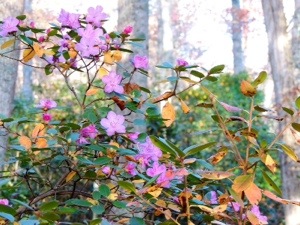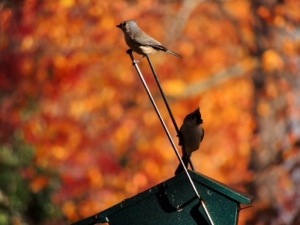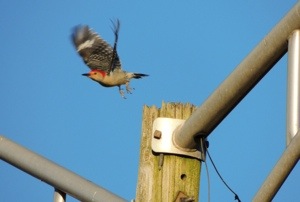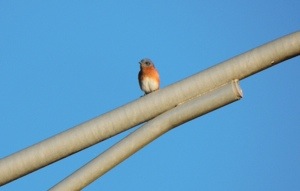20 November 2013. Woodland Cemetery and Burlington Bay, ON. Funny thing about owls, and perhaps winter birds in general, is how predictable, how performance-on-command some of them can be. I fell for it today by stopping by a damaged Silver Maple where a Eastern Screech Owl was a popular celebrity last winter. It’s back and has appropriated a hole where a branch tore away in some violent storm.
I wasn’t the only sightseer; I’ll leave it at that. Anyway, Screech Owls come in two colours or morphs: red and gray, this is a red morph just in case anyone asks you, it is a marvelous bird and an obliging photo subject.
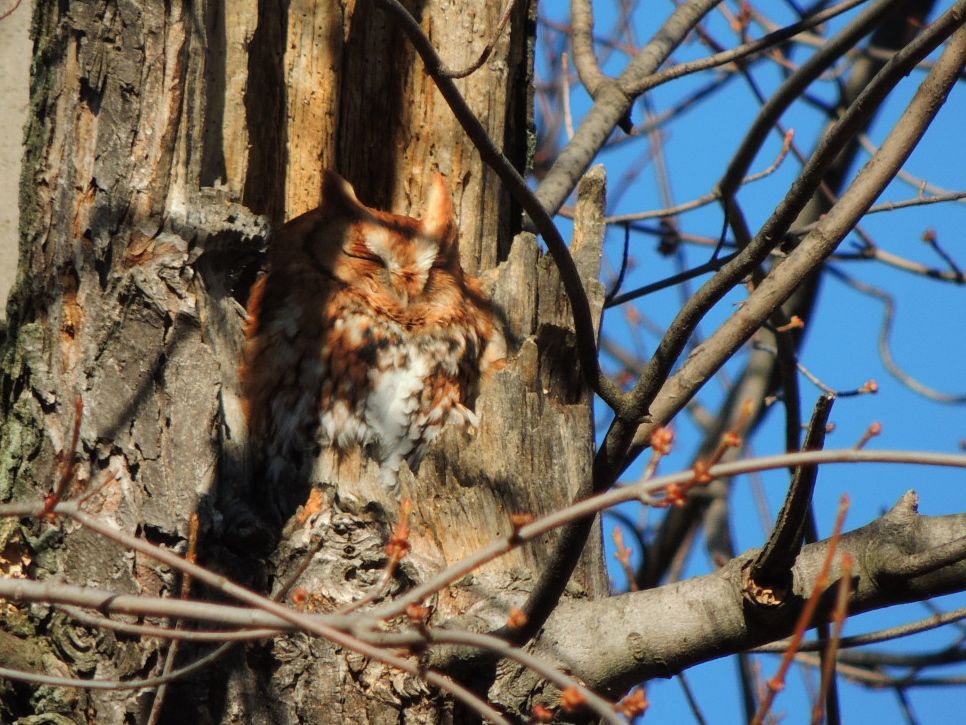
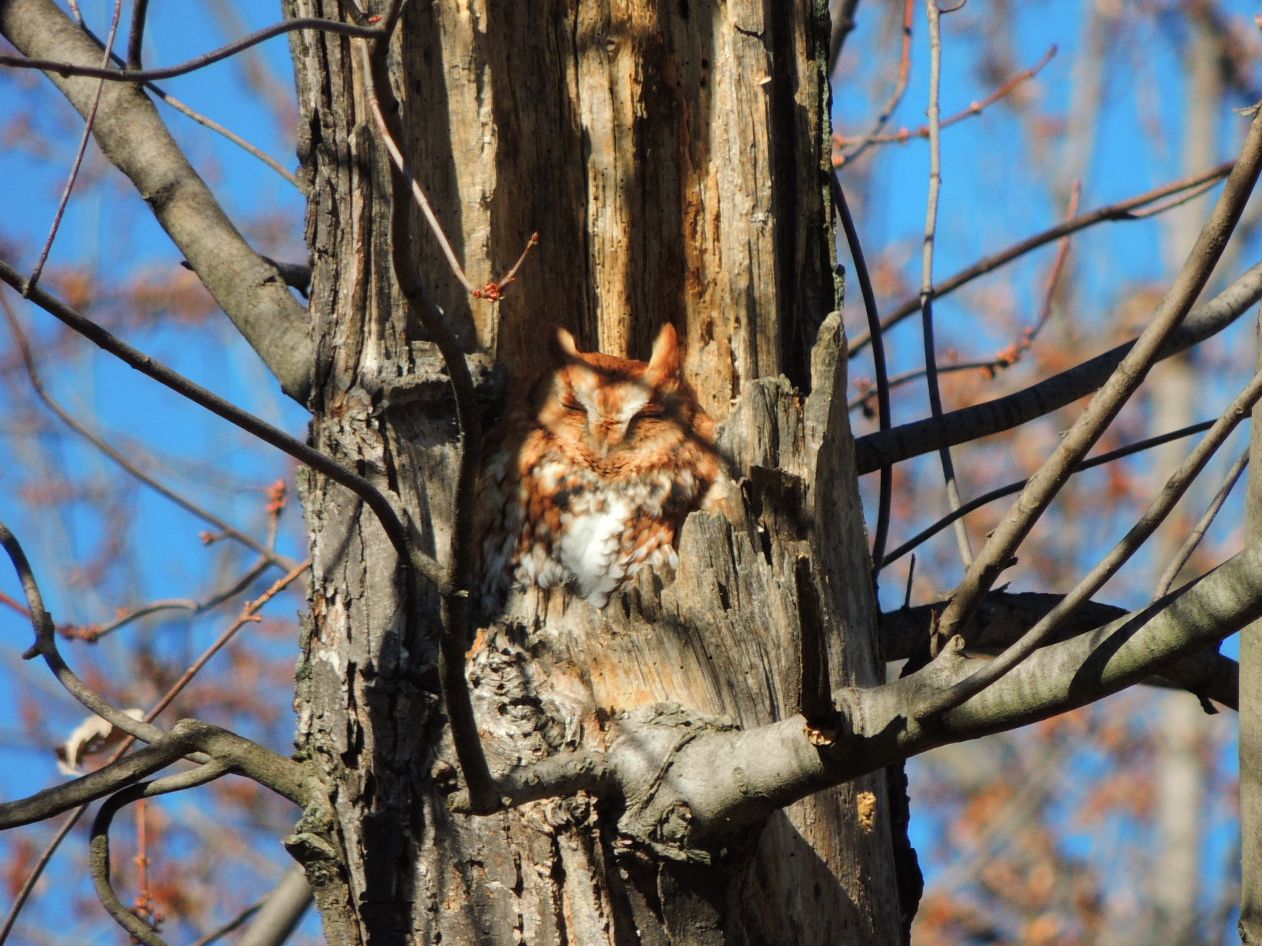
The owl was just one of a handful of worth-stopping-for birds today. A handsome Hooded Merganser, a Redhead and to a lesser extent a rather sad Double-crested Cormorant all challenged my camera skills.
The cormorant was a sorry sight. It really should be long gone from these chilly parts by now. It would be hanging around a catfish farm in Louisiana or Arkansas if it knew what was good for it; or if it could fly – which I came to realize it probably can’t. But perhaps because of a physical disability it’s still here and I’d lay odds that it won’t survive the winter. I’m not a fan of cormorants but I took rather a liking to this one, partly because of its plight and partly because of how easy it is to make out the arrangement of feathers on its wings. You may need an illustration from a bird guide to follow along, but the precise configuration of its primary and secondary flight feathers, primary, greater, median and lesser coverts are all there to see.
